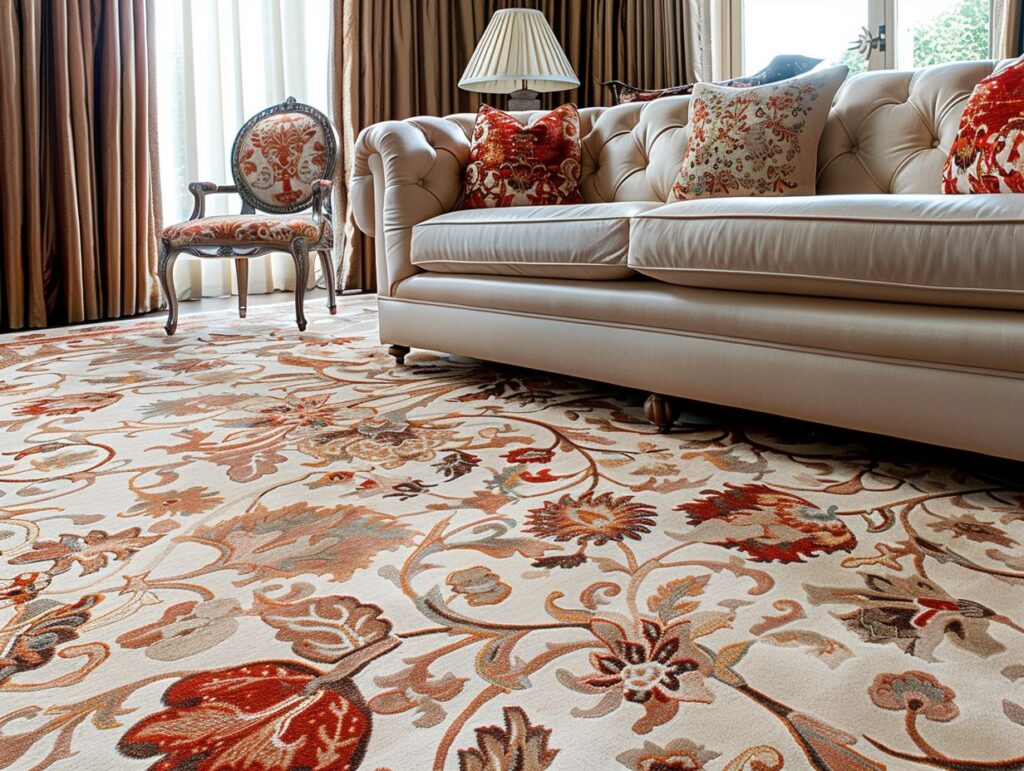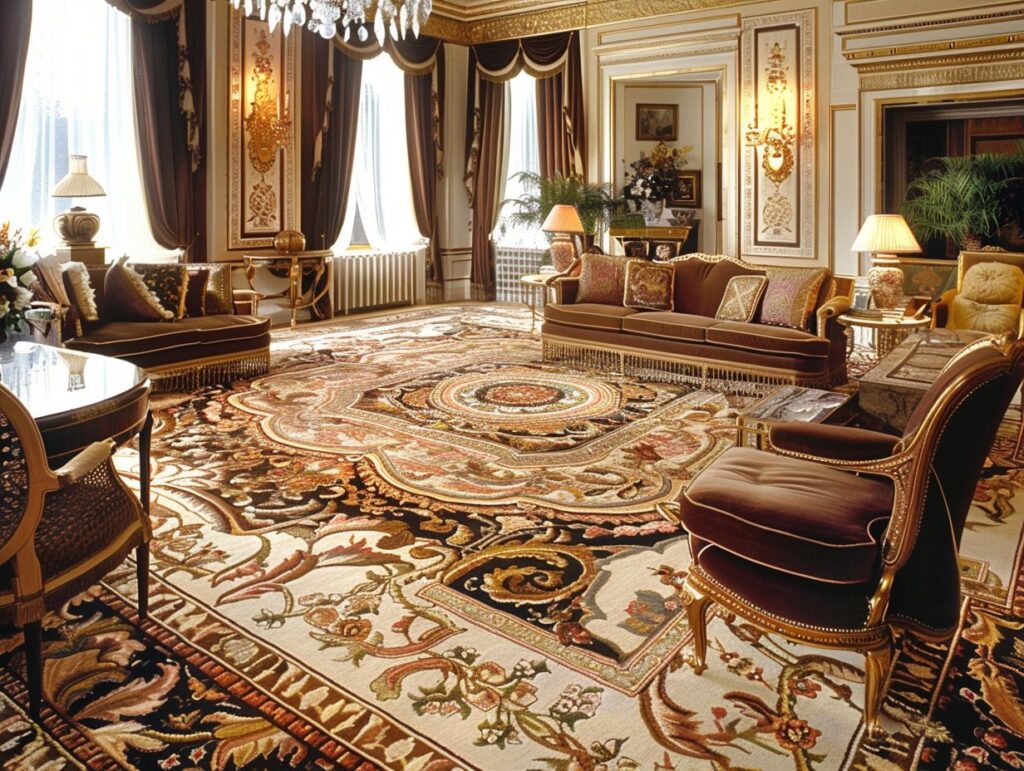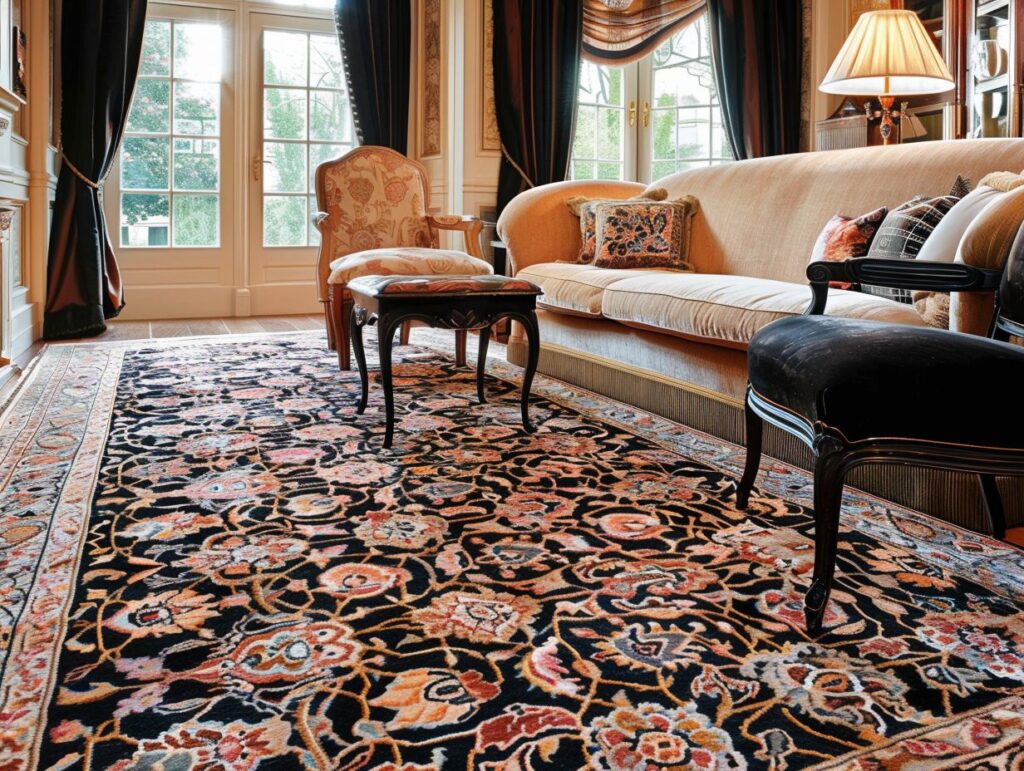I have cleaned Persian rugs in homes all over London, from tiny flats in Bromley to townhouses in Islington with proud collections hung across every room. I can tell you one thing with certainty. A Persian rug often fools the eye. It might look fine at a glance. It might even pass the quick “pat it with your hand and see if dust comes up” trick. Yet a rug that sits on a busy floor picks up grit every day. This grit sinks deep into the pile and settles where no brush reaches.
I used to visit a couple in Blackheath who had a stunning handmade rug from Tabriz. They vacuumed it every week. They kept shoes off the rug. They adored it. Still, every time they asked me for a mild hot water extraction, I watched years of soil lift from the base of the knots. They stared at the tank as if I had pulled soot from a chimney. That rug looked spotless when I walked in. It looked revived once I finished.
Mild hot water extraction sits at the heart of long-term rug care. It gets right into the fibres without stressing the wool or silk. I rely on it because it cleans, protects, and brings back the colours in a way dry methods never manage. Let me explain why this gentle rinse makes such a difference.
How Persian Rugs Trap Soil and Hidden Debris
Dense Fibres and Heavy Pile Structure
I never underestimate the depth of a Persian rug’s pile. Hand-knotted rugs tend to have a thick structure. Each knot supports the next, and the fibres form tight layers that hold on to grit, dust, loose hairs, pet dander and even microscopic skin flakes. These tiny bits fall into the rug every day and slip through the top before you notice them.
I once gave a rug in Hampstead a quick vibration test. I flipped a corner and gave the back a firm tap. A cloud of grey soil burst out as if someone had shaken out a builder’s bag. The owners were shocked. They vacuumed twice a week. They had no pets. The rug didn’t look dirty at all. The pile had trapped a slow build-up of dry soil that worked its way into the base over a year.
Why Dry Soil Causes Long-term Wear
Dry soil behaves like tiny blades. A single grain feels harmless. Millions of grains stuck between the fibres behave like sandpaper. Each step presses the soil against the pile, dulling the colours and wearing the fibres down. The rug might not look worn right away, but the damage starts long before you see it.
I have seen beautiful wool turn brittle at the tips because the soil cut into the fibres over time. Colours lose punch. Patterns lose crisp edges. A rug that once stood out starts to look tired. Regular mild hot water extraction helps stop this slow decline.
What Mild Hot Water Extraction Actually Does
Low-heat Water, Gentle Pressure, Deep Rinse
Mild hot water extraction uses a warm rinse, never scalding heat. I apply it with controlled pressure so the water passes through the pile without forcing it. The aim is not to blast the rug. The aim is to draw soil out through a steady rinse.
I pre-treat any marks with a safe solution chosen for the fibre type. I brush the solution in lightly, then extract it with the warm rinse. The water carries out the loosened soil and oils. I repeat this in small sections until the rug releases everything it has held for months.
People often confuse this with the aggressive method used on synthetic carpets. That sort uses high heat and high pressure. I would never use that on a wool or silk rug. The mild version respects the structure and keeps the colours safe.
How the Method Protects Natural Fibres
Wool and silk thrive when cleaned with balanced pH solutions. Mild hot water extraction allows me to keep the chemistry right while removing residue that dry cleaning leaves behind. Wool has natural oils that protect the fibres. Harsh cleaning strips them out. Mild extraction keeps them intact.
Silk responds to gentle moisture with care. A soft rinse lifts soil without stressing the threads. I rely on dye stability tests before any rinse. If I see even the faintest sign of colour movement, I adjust the method. This approach protects the pile, the foundation and the dyes.
I have taken calls from people who scrubbed a rug at home and watched the colours bleed into each other. They panicked. They called me to try to fix it. Mild extraction prevents those situations because it treats the dye structure with respect.
The Real Risks of Skipping Regular Deep Rinsing
Slow Colour Loss and Dull Tones
Colours fade not only through sunlight but also through soil that clings to the base of the pile. Soil attracts moisture. Moisture binds the soil into a paste. That paste coats the fibres and steals the brightness from the shades. A rug starts to look flat long before it wears out.
I once cleaned a small prayer rug in Clapham. The owner had no idea how vibrant the reds were until the soil released. He thought I had used some sort of magic. I hadn’t. I had simply rinsed away years of dull film.
Fibre Weakness and Premature Wear
Spills turn dry soil into sticky mud. This mud settles deep, stiffens, and pulls on the fibres each time someone steps on the rug. This pressure weakens the knots. A rug becomes loose in patches or sags where the mud lived for too long.
I have lifted rugs and found entire sections where the foundation felt soft from the breakdown caused by trapped soil and moisture. Regular mild extraction removes this threat long before it grows.
Odours, Moth Activity and Hidden Moisture Pockets
A rug that never sees a deep rinse holds on to pockets of stale moisture. These pockets invite moths. Moths love dark, untouched fibre. They settle inside the pile where the owner never looks. They also love sweat salts and food residue left behind by spills. A deep rinse disrupts that environment and makes the rug less appealing to them.
Odours come from bacteria that hide inside the pile. A mild hot water extraction clears them out and leaves the rug fresh without masking anything.
How Often a Persian Rug Needs Mild Hot Water Extraction
Clues From Foot Traffic and Room Layout
I judge the schedule by the way the rug lives in the home. A hallway rug that faces shoes, damp coats, pets and heavy foot traffic needs more care. A rug that sits under a coffee table gets less exposure but still gathers dust that falls from the room.
I often suggest a simple hand test. Place your fingers deep into the pile and give it a small push. If your hand comes out dusty, the rug needs attention. If you see small puffs when you tap the back, it needs a deep rinse.
Why Once-a-year Care Works for Most Homes
Most homes benefit from a yearly mild extraction. Families with pets or kids might need it every eight to ten months. Homes with little foot traffic can stretch to eighteen months. I treat each rug as a separate case. A stunning silk rug on a bedroom wall needs less work than a wool rug near a main door.
Rugs under large furniture often trap dust where the airflow stops. They still need care even though no one walks on them.
What You Should Expect From a Professional Rug Cleaner
Inspection, Dye Tests and Safe Compound Use
A good cleaner never rushes. I start with a full inspection. I look at the knots, the backing, the fringe and the dyes. I carry out dye tests on every colour. I check for moths. I check for previous repairs. I look for weak spots. I do all this before I mix a single solution.
Cheap services often skip these checks. This is where rugs end up bleached, buckled or misshapen. Care at the start prevents disasters later.
Controlled Drying and Post-clean Checks
Drying stands as one of the most vital stages. A Persian rug needs steady airflow and controlled moisture removal. I use air movers and dehumidifiers to keep the drying safe and even. Quick drying protects the fibres and stops colour shift.
Once dry, I groom the pile so the pattern shows clearly. I feel the fibres between my fingers to make sure there is no residue. I carry out a final inspection before I return the rug to the home.
Mild Extraction as the Key to Long Rug Life
A Persian rug holds history in its knots. Someone once sat at a loom for months to create it. Families pass them down for generations. Mild hot water extraction helps keep the rug strong and bright. It lifts soil, protects the dyes, stops damage before it spreads and keeps the piece fresh for years to come.
I have watched rugs transform through nothing more than a careful rinse. The fibres relax. The colours return. The pattern regains its depth. A steady schedule of mild extraction makes all the difference between a rug that survives and a rug that thrives.





